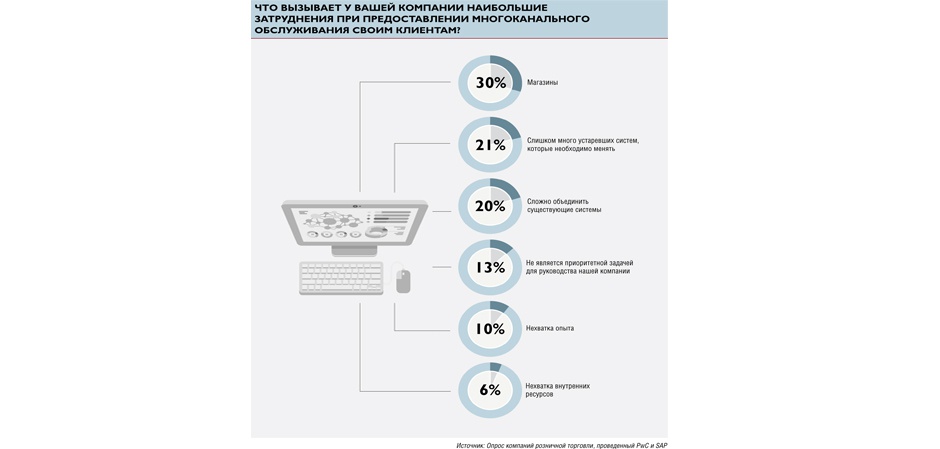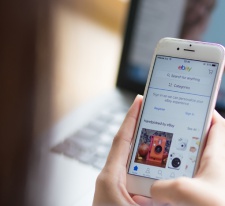Fashion verdict: pay, or you'll lose
part 1part 2 part 3part 4& nbsp; part 5
PHONE ROMANCE
Key changes in consumer behavior in the future will be associated primarily with the emergence of a new generation of networks. Experts predict that, for example, Skynet Worldwide Express will allow you to remove data transfer speed limits. This will greatly simplify the buyer's interaction with any devices, RD Management reported. According to PwC forecasts, by 2020 there will be a significant increase in the share of purchases made using smartphones (up to 30% of the total volume) and in social networks. However, already now the number of such purchases significantly exceeds the number of transactions from a tablet and almost catches up with purchases on a PC. According to JLL estimates, mobile sites have become the fastest growing sales channel. «This is due to the fact that the phone first replaced the prefix «tele » with «smart », and will soon lose «phone» in the name, – said Alexander Ustinov, Director of Development RD Management. – Progress is moving towards multi-gadgets of the right size with the most in-demand on-demand functionality.
In the next fifteen years, the smartphone will remain the main user device, and today a generation has grown up in Russia, accustomed to living with a phone in their hands. According to the estimates of the consumer behavior study "Young&Younger" (conducted by the independent research agency MAGRAM MR together with the international communication agency PBN H+K in 2017), already half of the representatives of this generation are shopping online. It is for such customers that augmented reality, identification at the entrance with the provision of the most personalized offers and other know-how are by no means "guests from the future", but the expected must have in every store. In turn, the development of recommendation services and CDP (Customer Data Platform) in retail will lead to the fact that buyers will begin to make a purchase decision even before visiting the store, Segmento is convinced.

"Against this background, retailers today are required to be as enthusiastic as possible about technical innovations, and shopping centers finally begin to take this potential seriously," Alexander Ustinov expressed his opinion. In the meantime, most shopping centers implement only navigation (not even interactive) in applications and occasionally publish information about promotions in stores represented at the facility. "But successful mobile apps work on the principle of a toothbrush: a person should use it at least once a day," Kirill Stepanov, head of Marketing, PR and Advertising Department at MALLTECH, is convinced. In the wake of the popularity of applications of various kinds, some companies make their own, beautiful and convenient, launch a large amount of investment in their promotion, but the results for sales may be zero. In such a situation, it is necessary to focus on the development of multifunctional and convenient adaptive or mobile sites, as well as to stimulate sales through social networks and online stores of partners.
In addition, investments in mobile versions of websites and applications that unite several groups of retailers may become especially relevant in Russia, suggested Alexander Ustinov. «For example, the application «Edadil» quickly gained popularity, collecting discounts and promotions on goods from various stores, – the expert recalled. – Perhaps it makes sense for large retailers and groups of companies, such as Inditex, to think about creating unified applications for all their brands, combine them «umbrella » and give the buyer the opportunity to find everything in one place ».

However, many experts believe much more in the good old site with mobile adaptation than in a mobile application. "Developing a website with mobile adaptation is cheaper than a mobile application," said Patrick Sjoberg, Executive director of SRV shopping center management in Russia. A person wants to quickly get the necessary information: the availability of the store, opening hours, how to get to the shopping center. It is worth swallowing your pride and not striving to create the best product in the form of a mobile application. If you are not a professional in this industry, you will always be only second.
LATE AND NEVER
PwC experts called the increase in the frequency of purchases by so-called late adopters, who are making more and more purchases online, the main incentive for growth. "The peculiarity of late adopters is that they spend much more time on purchases, primarily due to the fact that they use a rational approach to shopping," Alexander Ustinov said. There is practically no place for emotional purchases among them. In fact, the consumer conducts a full-fledged marketing analysis of the market of the product that he chooses, looking for a product with ideal characteristics at the best price. On the Internet, this information is fed systematically, which is why in recent years there has been a boom in aggregators with the ability to compare all known characteristics of goods. The growth of the presence of such buyers should lead to the fact that the owners of commercial real estate will be able to expand the pool of their assets with online solutions, while maintaining offline and realizing the right synergy between them.
However, as noted by Yegor Levchenko, head of the retail real estate department of ILM, this trend leads to a decrease in the area of stores to the level of the "order window". "In the diffuse theory of Everett Rogers, the late majority is a group of people who are usually skeptical of changes and accept innovations only after society has experienced them," recalled Alyona Marinicheva from Adamant.. – Now technology is penetrating into all segments, nevertheless, many people like shopping precisely because it is a whole ritual, an opportunity to change the situation, go shopping, «touch » the goods before buying. We don't think that human psychology will change dramatically in the foreseeable future."

Tactile acquaintance with goods, spontaneous purchases and the possibility of fitting will still remain a priority, especially in fashion and beauty, Kirill Stepanov agreed. "In addition, an individual approach is still important when the consultant sees the buyer and goes to personal communication," explained Mr. Stepanov. – The online store cannot offer such an opportunity. This is where the advantage of offline trading and hot sales manifests itself: personal communications allow you to convince the buyer to make a purchase and return to the store in the future.
PwC, in turn, suggested that both trends will develop: on the one hand, the share of electronic purchases will continue to grow, on the other hand, the reverse trend of O2O (online to offline) will continue (and in Russia it will strengthen), which will reflect the desire of companies to use emotional leverage on the client. Today, this trend is clearly evident in the United States, where traditional online retail giants are opening offline stores.
Author:Ekaterina Reutskaya
Photo: shutterstock.com











